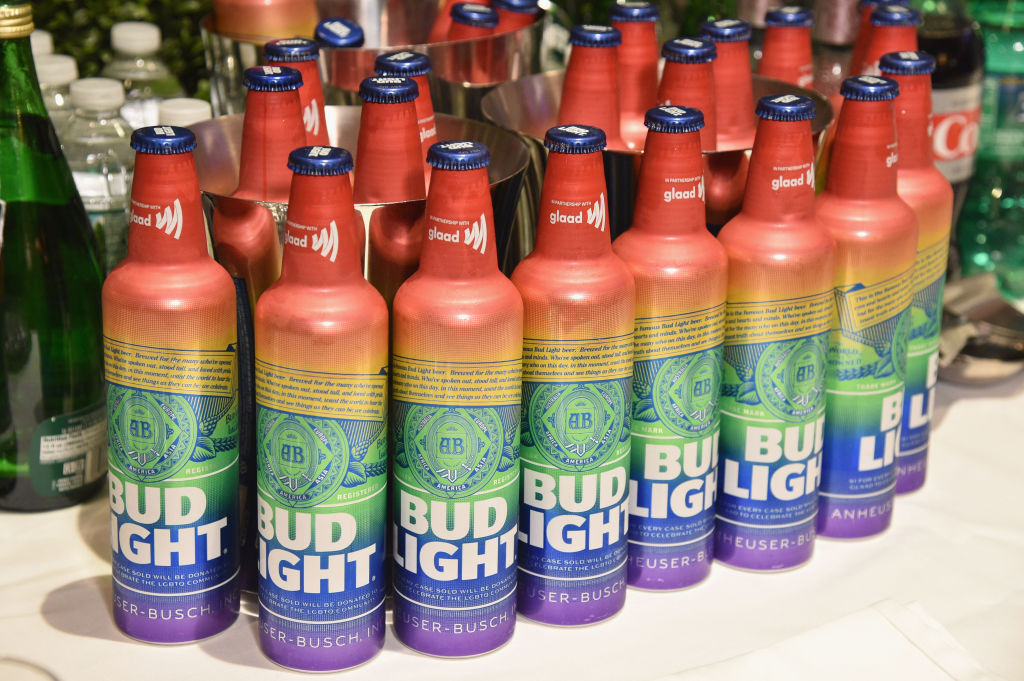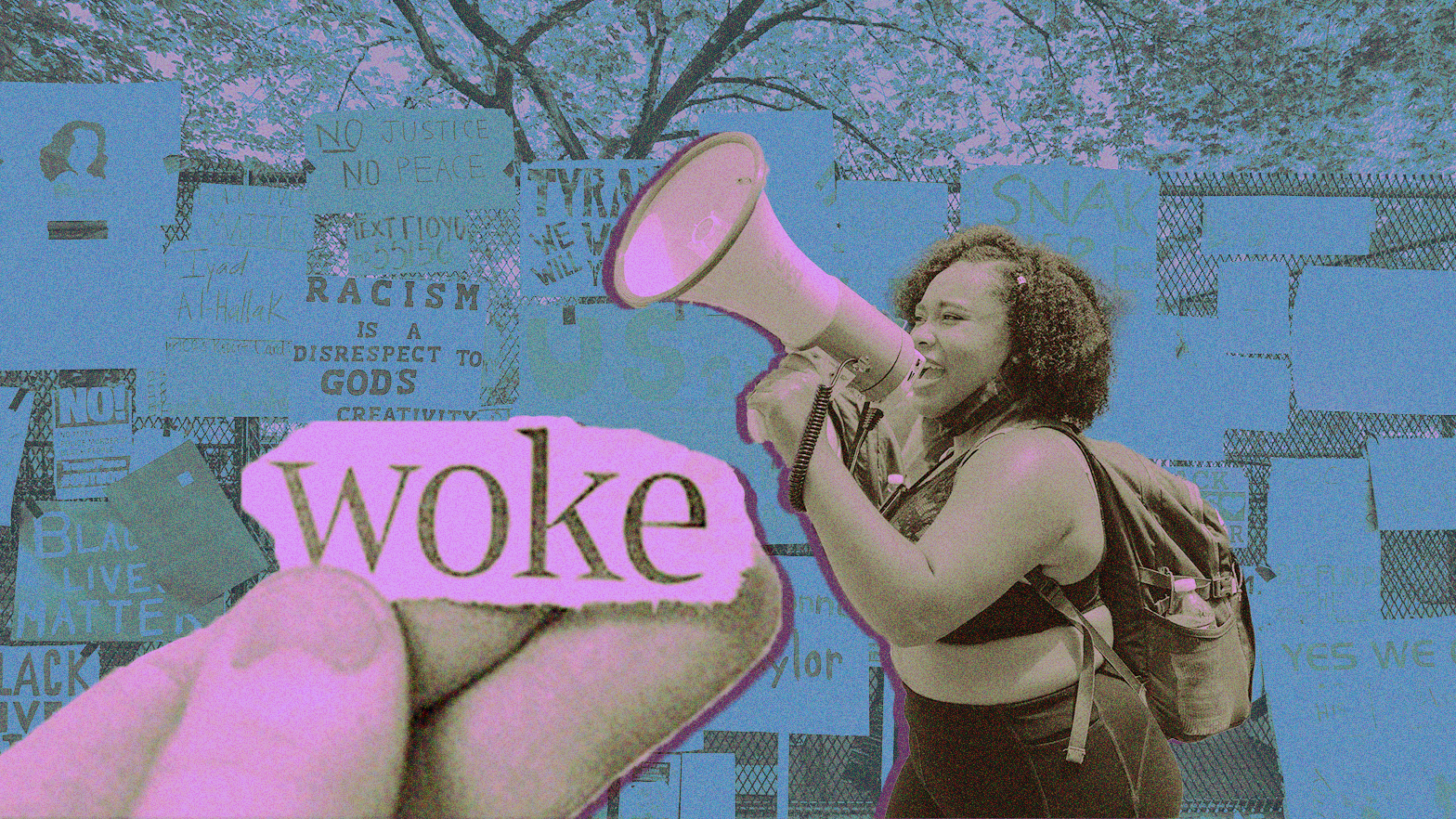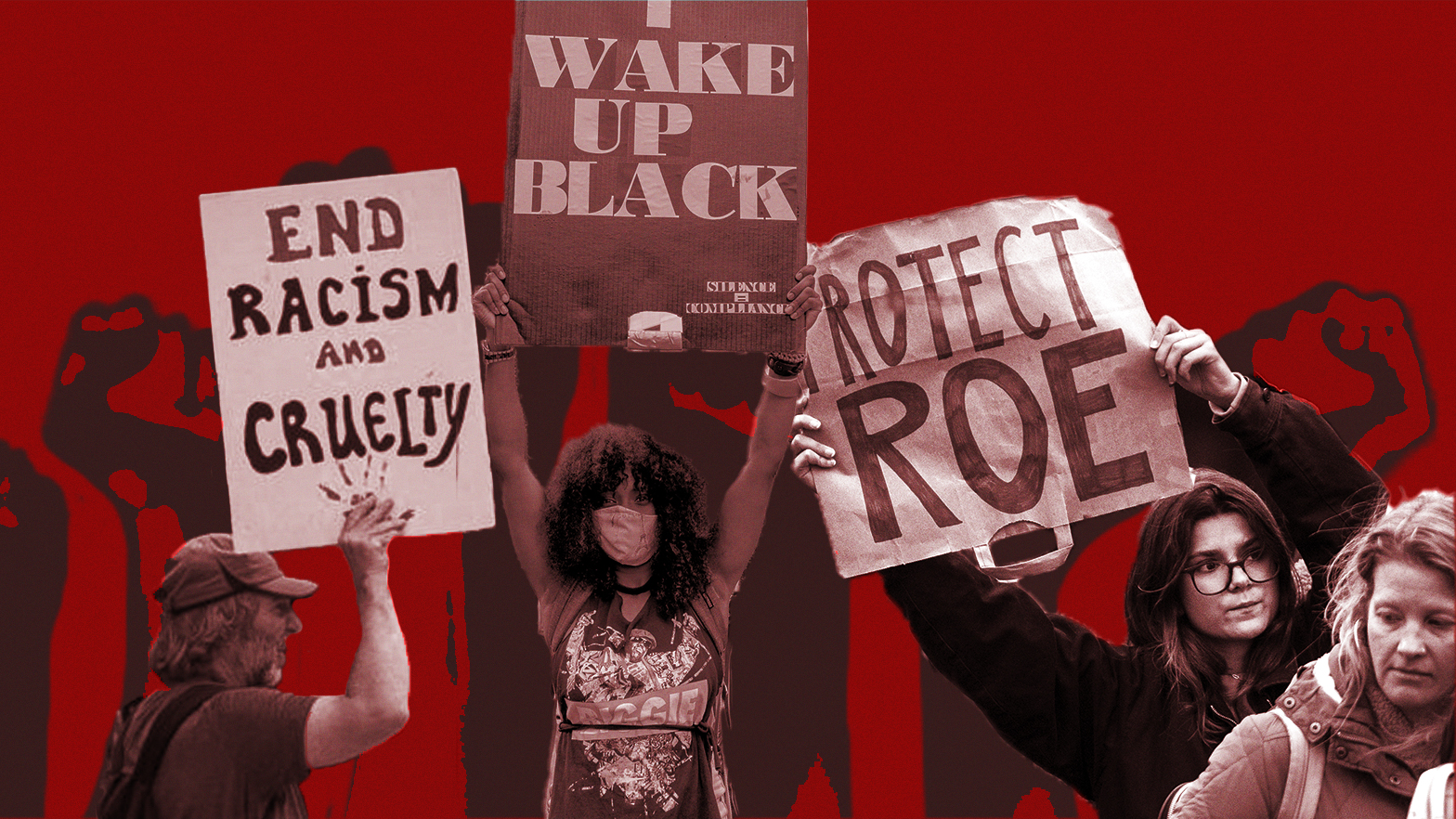Focusing on diversity pushes competency to the side.
We Must Seize the Means of Propaganda

The advertising industry is the unacknowledged legislator of wokeness.
I love the creative rigor of branding and advertising. I love solving problems with a team. I particularly love the challenge to be beautiful, unique, and clever—all at the same time. But working for over ten years at brands and agencies of all kinds, I watched as the environment became increasingly monolithic and close-minded. There’s so much talk about “thinking differently,” but in my experience, most people in the ad world think very much alike.
This is a shame as our brands and ads once carried the best of American culture across the world, a potent message evoking big dreams and limitless potential. But the American chauvinists who gave birth to Coca-Cola, “Just Do It,” Uncle Sam, and the Golden Arches have been replaced by a close-knit tribe of out-of-touch Hype Dads and ultra-progressive dog moms. You see their woke work product on Twitter just about every week, sparking boycotts and enraging normal working people.
The major propaganda firms (i.e., marketing, strategy, PR, advertising, branding, media-buying) in America are extremely powerful but totally hidden from the public. There’s no clear path into them and no traffic of information from them, which is one reason why woke elites have managed to conquer them so effectively. But what they can’t hide is how humiliating their work has become. They’ve transformed America into a sort of reverse Sparta where everything we do is designed to increase, promote, and glorify the weakness of our people. Instead of building campaigns around sports heroes like Michael Jordan who win, they celebrate Simone Biles for backing out of competition or Colin Kaepernick for whining and complaining.
But even more embarrassing than their product is their work environment. Its absurdity has somehow remained hidden until recently, when rumblings of the “longhouse” have brought workplaces controlled by glorified schoolmarms into the public consciousness.
I worked for a little over a decade in these environments and saw them decline over time, as competitiveness, personal merit, and actual achievement—even monetary wins—were downgraded in favor of agreeableness, indirect communication, and the ability to share innocuous stories about one’s pets or one’s weekend.
Experiencing the absurdity of the marketing-world longhouse is shocking for anyone, but once you do, woke marketing makes so much more sense. It is, in part, a conspiracy—global development banks and private equity groups do dangle cheap funds in front of corporations via DEI scoring systems. But it’s also a portrait of chaos, what happens when all merit bleeds out and is replaced with hypersocialization. InBev, the Belgium-based brewery that owns Anheuser-Busch, which makes Bud Light, can take a stock price hit, even lose millions in revenue, over a woke marketing blunder and not feel enough pain to fire anyone.
But there’s a silver lining. No one is minding the store. Unlike the film, music, and art worlds, whose work environments are the subject of intense public interest, the propaganda industries are ensconced between businesses; an unguarded flank of the not-so-American Empire. They’ve gotten so weak and wasteful because they haven’t had to defend themselves. This means we have an opportunity. We must seize the means of propaganda!
The Marketing Longhouse
Several years ago, I joined a mainstream marketing agency in a creative direction role. This is the list of SaaS, or Software as a service, programs I was required to use to do the job.
- Hightail
- BambooHR
- Gusto
- Box
- Basecamp
- Nutshell
- Workfront
- Microsoft Teams
- iMessage
- Adobe Indesign
- Adobe Photoshop
- Adobe Acrobat
- Powerpoint
- OneDrive
- OneLogin
- Sharepoint
- Zoom
- Outlook
- Exchange
- Google Chrome
- Google Docs
- Google Sheets
- Microsoft Excel
- Microsoft Word
- ADP
- Manage Engine
- “The Server”—shared drive on our computers that was virtually impossible to sign into
- Halogen
- Preview
- Miro
- Figma
Most of my time was spent logging in and out of these programs with our SSO software, which rarely worked, needed to be constantly updated, and broke links to the programs it was supposed to be securing, all of which required two-factor authentication lest our top-secret brand fonts and colors be leaked to the public.
By far the evilest SaaS was Adobe’s project-management software, aptly-named Workfront; advancing the front of work without producing anything. It allowed my all-female management team to assign and re-assign tasks, edit calendars, send reminders, click “in-progress” and “complete” checkboxes, update various statuses from red to yellow to green, and track billable hours down to the minute, all while demanding that we do the same.
We spent the majority of our days on Workfront managing the work we were supposed to be doing without ever actually doing any of it: levers floating in space, connected to nothing, switching back and forth forever into eternity. We tracked hours in the tracking software, tagged team members in the calendar software, had four to six hours of meetings in the meeting software, then signed off at 3 p.m. and called it a day. My role writing ideas, concepts, and content for large brands in reality required only one program—Google Docs. But the amount of time doing actual conceiving and writing was maybe—and I mean this seriously—three to four hours a week. For this I was paid a ridiculously high salary.
One particularly inane activity included scrambling around over DEI sensitivity, a constant discussion which mandated inclusion, or non-inclusion, of people of color in every creative asset. In one instance, we removed a black man in a karate uniform from an ad because it suggested violence. “There is potential here to miss the mark,” said the overweight Indian female brand manager, a woman in her fifties controlling probably hundreds of millions of dollars in marketing funds. “I myself have been on the receiving end of insensitivity many, many times,” she said, choking up with emotion. “In a situation like this, we can only listen to the Diversity and Inclusion Committee.” I counted the number of people on the call when she said this, 14, most of whom making upwards of $150k a year—and none of them black. The DEI consult would occur separately so as to avoid further risk of insensitivity, and would surely be even more expensive.
The clients paid for all of it. Zoom meetings—alternatively called stand ups, swirls, scrums, brainstorms, check ins, jam sessions, reviews, dry runs, presentations, connects, regroups, statuses, chats, and discoveries—occupied our short days. Teams 20 deep—writers, designers, illustrators, brand strategists, media strategists, website builders, UX specialists, social specialists, account supervisors, project managers—were paid to discuss cats and dogs and vacation plans.
In one particularly egregious instance, we billed a client over $8,000 for a single “native ad,” one of those little boxes at the bottom of your news article that shill skin medicine or gold bullion. My job was to select a stock photo (two and a half minutes of work) and write a headline (six minutes of work). At that rate, we made $56,470 per hour, or $941 per minute, for creative services only. Extrapolate this to every hour of every day and you’ll have a sense of where marketing budgets actually go. Although everyone in mainstream marketing will deny it to their deaths, clients are getting absolutely hosed beyond all possible reckoning. They’re paying $4 million a year for work that could be done for $100,000—and they’re doing this at an exponential rate. The marketing budget of a big global brand breaks $1 billion a year.
The gravy train sprays endless money at a charade which supports the lavish lifestyles of a million people who shovel lattes into their mouths and make ski plans. Alissa Heinerscheid, the Bud Light executive behind the trans can with Dylan Mulvaney’s visage, lives in a $7.5 million condo in Manhattan that overlooks Central Park. My former boss, who works at a small branding agency, lived in a $4 million home in Pac Heights.
The marketing industry is a giant cancerous growth hanging off the side of global capital, and not even the shrewdest financial engineers think to lop it off.
The Can Seen ‘Round the World
Before this recent controversy, many smart people clung to rational explanations for campaigns like Gillette’s “Toxic Masculinity,” 72andSunny’s “The NFL is Gay,” Calvin Klein’s obese/man-pregnant billboard models, Nike’s whole Colin Kaepernick thing, and, the worst offender, Postmates’ “Bottom’s Menu,” which promoted optimal meals for men preparing to receive anal sex. Moderate conservatives and Never Trumpers explained these insulting campaigns as either capitalist calculations (“They focus group this stuff!”) and/or naive missteps (“They just don’t want to get in trouble with the Twitter mob!”).
Unsurprisingly, efforts to #BoycottGilette or #JustBurnIt fell flat. “Go Woke, Go Broke” became an empty chant as stock prices for woke global megacorps plummeted—“Gillette parent Procter & Gamble loses $3 billion in valuation in one week!”—then went right back up without one single marketing executive losing their job.
This pattern seemed like it could go on forever, with corporations continuing to inch forward far-left ideologies until they aren’t so far-left anymore. But then the Bud Light can happened. There was just something about the image of a theatrical gay man dressed as a woman that illustrated such perfect mockery and degradation of a symbol of the American working class. Without any rational capitalist explanation, the phenomenon could simply no longer be ignored or explained away.
Since I’ve written on the topic, I received an overwhelming number of messages about the can. People were shocked to discover it wasn’t an April Fool’s joke. Even left-leaning friends who had previously passed it off as naked capitalism relented.
“Looks like you were right—corporations don’t care about the bottom line anymore. They only care about virtue signaling to each other,” one said.
For right-wingers, it drove the final nail into the coffin of a terrifying political reality that we, deep down, hoped wasn’t actually true: bio-leninists actually are taking over the world. And they’re much further along than we’d realized. They’re “updating brands” to match their worldview, a.k.a. deleting our culture and replacing it with their own warped vision, which we, their subjects, find disgusting.
An Opening for the New Right?
But there are glimmers of hope.
Many on the New Right have rightly decided to fight with art, focusing on putting up a sort of alternative “punk rock” tent to draw in the elites and flip them to our side. It’s a good plan, and, I must say, having experienced the alt lit/trust fund/art kid crowd in Manhattan for two separate right-wing events this year, it’s working.
But one front the New Right has not sought to fight on yet is against the propaganda industries, but we should, because they’re a vulnerable, unguarded flank of the leviathan, one that it hasn’t learned to protect simply because it’s never had to. The marketing world provides the perfect lens and the perfect front with which to fight this information battle. From this angle, we can see the thrust of their power and the value of their capital—but also the utter dysfunction of their anti-meritocratic organizations and the total absurdity of their work product.
We must remove them from power. But how? It’s extremely simple: the work of good advertising—of good propaganda of any kind—is to be so beautiful and convincing that it bridges cultures, not separates them. This is what Michael Jordan understood. It was Victoria’s Secret. It’s why the Coke bottle is worshiped when it falls out of a plane over Africa (while the trans can would surely be shunned), and why the first thing foreigners ordered when they got to America used to be an ice-cold Bud. We must make our own beautiful brands, create inspiring ads for them, and place them in front of consumers, letting them choose between beauty and ugliness. Let it dawn on legacy brands that they’re throwing away billions on nothing, or less than nothing. Don’t react to their absurd trash—make your own. In a world clogged with art propaganda, we must sneak around their unguarded flank: we must make propaganda into art.
The American Mind presents a range of perspectives. Views are writers’ own and do not necessarily represent those of The Claremont Institute.
The American Mind is a publication of the Claremont Institute, a non-profit 501(c)(3) organization, dedicated to restoring the principles of the American Founding to their rightful, preeminent authority in our national life. Interested in supporting our work? Gifts to the Claremont Institute are tax-deductible.
Rising wokeness in medical schools is a problem for patients everywhere.
Sane Texans must act to remove all traces of DEI in the state.
Administrators at Texas A&M try to bury their woke hiring agenda.
The counter-universities defying wokeness in higher education.
Alabama’s great public universities are folding to the diversity agenda.






